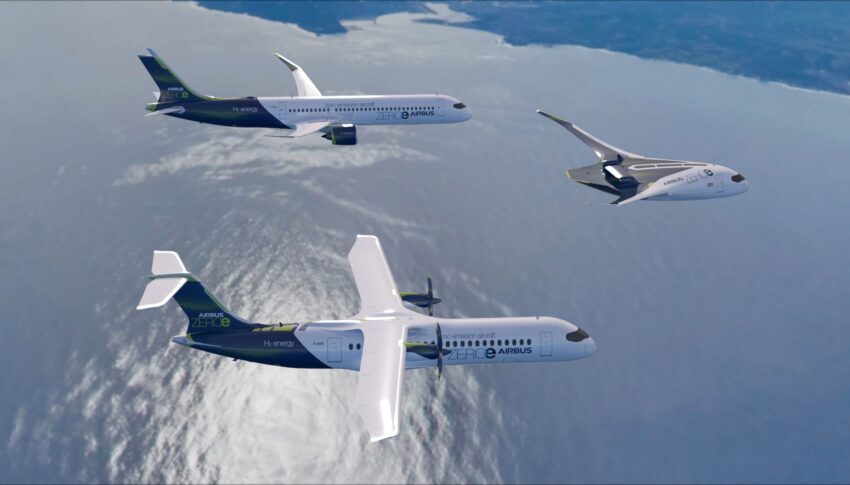Hydrogen-powered aircraft are set to be one of the key pillars of aviation’s decarbonisation efforts in its journey towards carbon emissions reduction and net-zero. But fundamental questions around hydrogen safety remain in two key areas. First come the internal industry questions — the technical answers to how it will work, in other words. Second are the wider questions of persuading passengers that they will be kept safe on board, and that their flight will not turn into a modern Hindenburg a century on.
[into links: Hydrogen-powered aircraft | aviation’s decarbonisation efforts | a modern Hindenburg]
We sat down with Roland Gerhards, chief executive officer at ZAL, the Center of Applied Aeronautical Research in Hamburg, for his take on where hydrogen safety is right now, and how it will evolve towards operationalisation in the airline context.
“The behaviour of hydrogen is very different to Jet A-1, and the knowledge about it is low — especially in the aircraft environment,” Gerhards explains. “Hydrogen molecules are very small and therefore it is more difficult to avoid leakages.”
Crucially, Gerhards explains, the fact that hydrogen is lighter than air means that it can accumulate above any leak in a closed space, so new detection and ventilation systems at a minimum will clearly be needed. Hydrogen also requires either high pressures, very low temperatures (-253°C, Gerhards says) or both, which both pose new challenges.
At present, most of the knowledge for industrialising hydrogen into the mobility sector comes from either automotive or space, with substantial experience naturally also in the petrochemical industry, which also understands much of the production, storage and distribution challenge.
In the experience outside of aviation, “hydrogen is not more dangerous than kerosene,” Gerhards suggests, acknowledging that there are differences between the use of hydrogen in internal combustion engines and fuel cells, “but there are other risks – this must be understood by all stakeholders. Handling of hydrogen is well known and established.”
Airbus’ initial plans for hydrogen test aircraft come in three shapes: a hydrogen high-winged turboprop the size of an ATR, a hydrogen narrowbody the size of an A320, and a blended wing body test aircraft that doesn’t precisely correspond to a commercial size of aircraft. The working assumption is that, at least for the two aircraft with recognisable shapes, large hydrogen fuel tanks will be placed at the back of the aircraft.
The answers, says Gerhards, are “not clear yet as the tanks are part of the development process. Most probably the tanks will be cylindrical or spherical but geometries and weights need to be investigated within the aircraft development process, based on the mission profile.”
Unlike kerosene-powered aircraft with tanks inside the wings, Gerhards notes, “the main difference to the kerosene tank is that they can not be part of the structure that easily. A liquid hydrogen tank has to have two walls with a vacuum and insulation between.”
Yet talk to members of the general public or read a story in the general media about hydrogen and one of the first questions that comes up is about safety — and many will mention the 1937 Hindenburg disaster, even almost a century on. Aviation will need to consider the extent to which hydrogen power needs a public relations campaign, perhaps along the lines of the Piccard-Borschberg Solar Impulse round-the-world solar-powered journey, to demonstrate to prospective passengers and the wider public that using hydrogen in the aviation context is safe.
Helpfully for aviation, however, over the next ten to fifteen years while hydrogen-powered aircraft are in development, as governments and manufacturers phase out fossil fuelled automobiles in favour of alternative fuels, people will become more used to seeing hydrogen at the pumps and hydrogen powered cars and trucks on the roads.
“I’m driving a [hydrogen] fuel cell car and the feedback is always very positive at gas stations, parking, etc — people like it a lot and there is nearly no safety concern,” Gerhards says.
But the industry overall, and particularly safety regulators, need to be more proactive, even if other industries like passenger automobiles — and particularly more highly regulated industries like road freight and rail — are ahead of aviation’s hydrogen timeline.
“A lot of other applications will use hydrogen before commercial aviation. That will show that a safe use and operation of hydrogen is possible,” Gerhards notes, recommending also “activities to demonstrate the safety level of hydrogen and to train the first responders: firefighter, ambulance, and so on. The most important way is to inform the people and to explain what is done and how it is done.”
Aviation certification, regulatory and safety authorities, associations and organisations, Gerhards notes, are not particularly familiar with hydrogen and are still in reactive mode. “There are some activities by FAA, EASA, ICAO and EuroCAE (WG80) to establish rules and guidelines, but this process is in an early stage. Basically the regulators want the same level of safety, but it is difficult to explain the differences between hydrogen and Jet A-1 applications.”
For a start, the relevant rules are written for fuels that are liquid, not gaseous, at ambient temperatures in their operational environments, and a gaseous fuel could not logically meet the specifications. A variety of standards, from a variety of standards organisations, are currently still in development [PDF].
Gerhards highlights modelling of prospective leakages and areas where hydrogen might accumulate, as well as big data-driven health monitoring of critical components to reduce risk.
What is clear, though, is that this will be the first generation of aircraft to be designed from nose to tail (and fuel tank to engine) with a full range of digitalisation options, big data-enabling sensors and the opportunities for efficiency and safety that machine learning, artificial intelligence, digital twinning and other key technology clusters bring.
Author: John Walton
Published: 20th January 2022
Lead Photo: Airbus ZEROe Concept Aircraft Formation Flight
Courtesy of Airbus Media Centre



